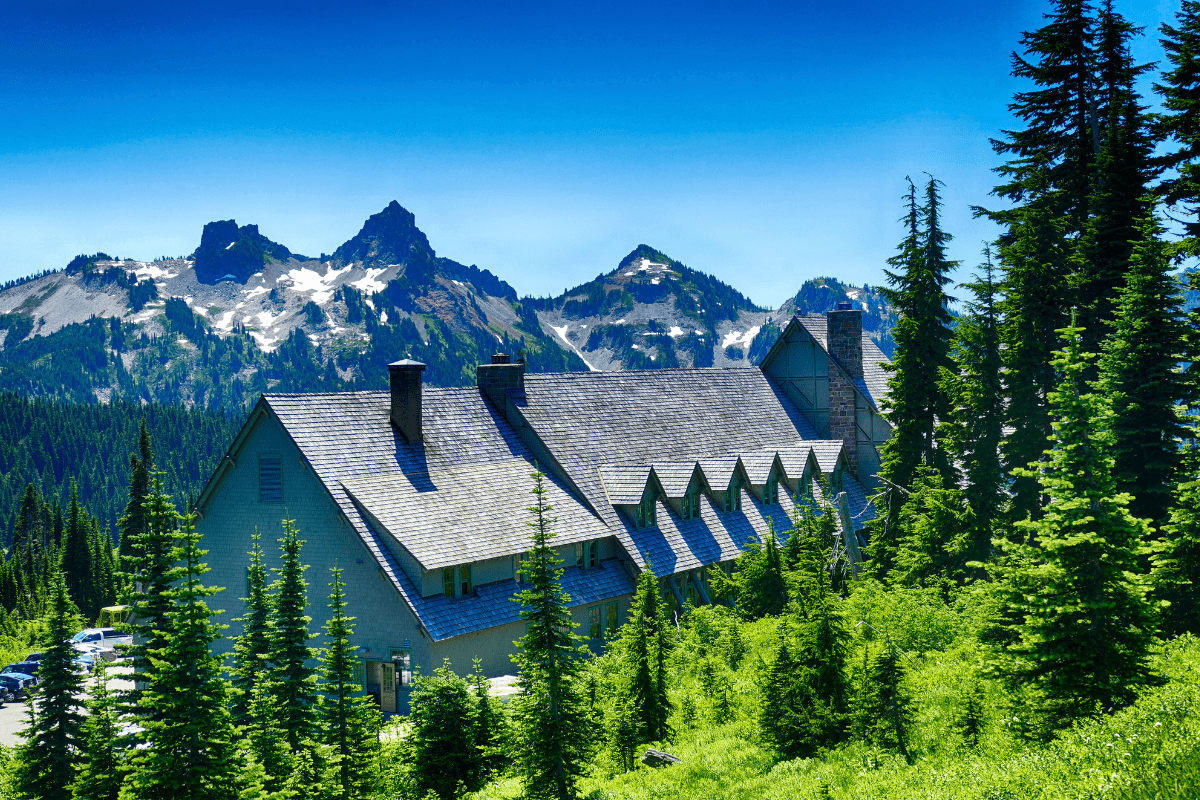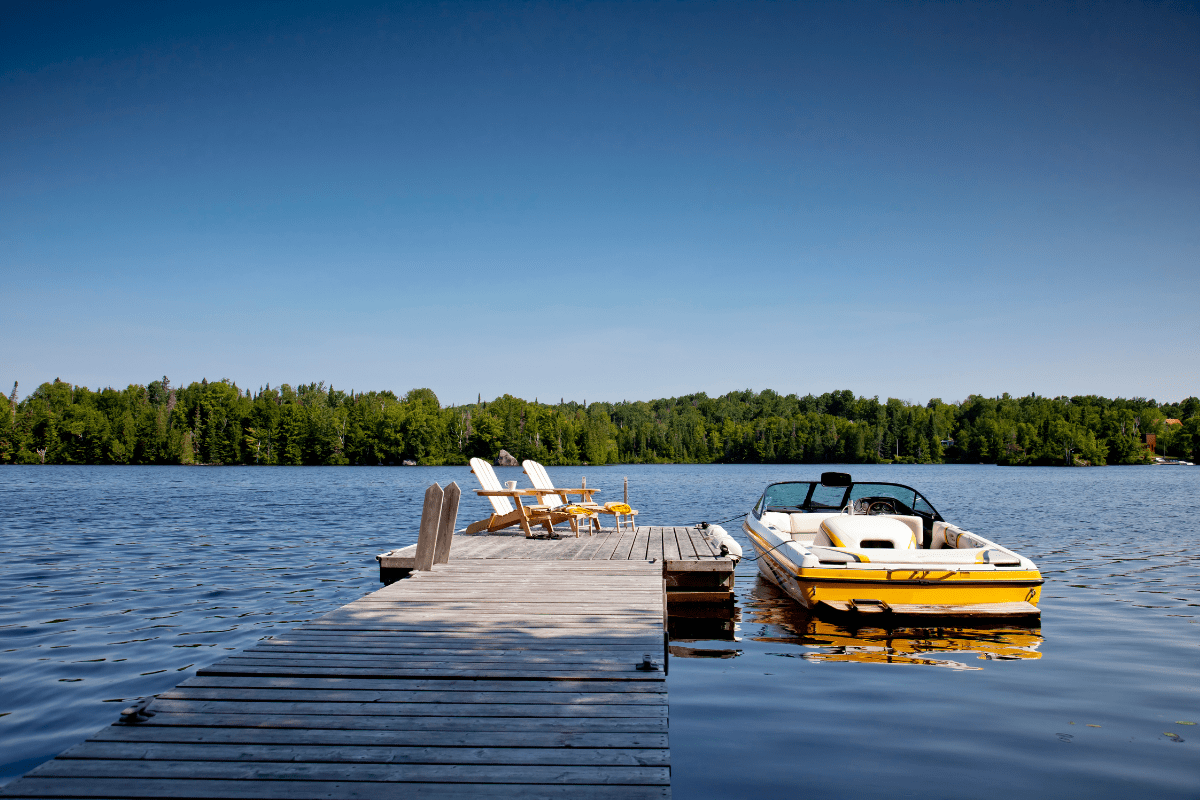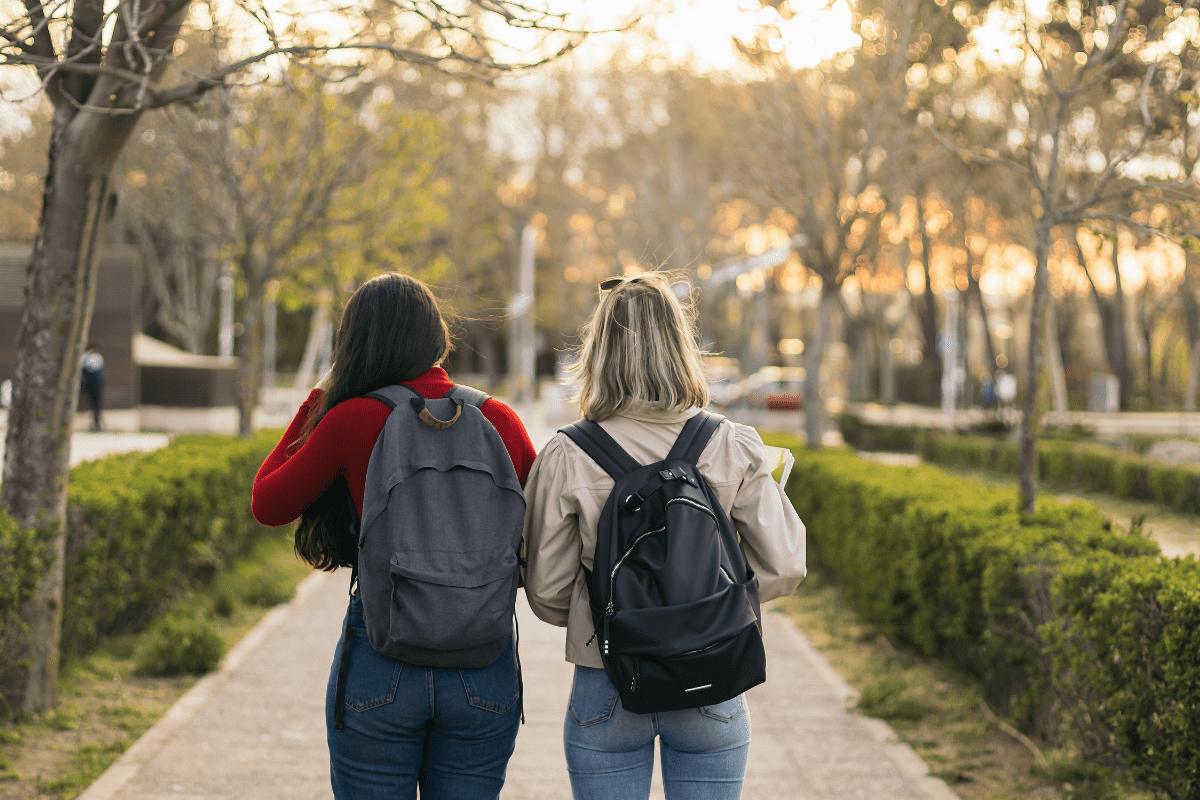Washington State's historic landmarks tell stories of pioneers, indigenous cultures, and technological dreams that shaped the Pacific Northwest. From the territorial disputes of San Juan Island to the futuristic vision of Seattle's Space Needle, these sites transform textbook history into experiences you can actually walk through, touch, and occasionally wonder what everyone was thinking.
The Space Needle: When Seattle decided to reach for the stars
Let's start with the obvious… the Space Needle isn't just Seattle's most photographed structure, it's basically the city's exclamation point against the skyline. Built for the 1962 World's Fair, this 605-foot tower was constructed in less than a year for $4.5 million, which sounds like a bargain until you realize that's about $45 million in today's money.
The Century 21 Exposition, as the fair was officially called, drew nearly 10 million visitors over six months. The Space Needle alone hosted 2.3 million people who rode elevators to the observation deck in 41 seconds flat. Today, after a recent renovation that added the world's first rotating glass floor (because apparently regular floors are so last century), the Needle continues to embody Seattle's "why not?" attitude toward architecture.
Edward Carlson, the hotel executive who dreamed up the Space Needle, literally sketched his idea on a napkin in a German café after seeing Stuttgart's broadcast tower. The final design went through multiple iterations, including versions that looked like a landed UFO and, my personal favorite, a cocktail shaker with a tram. Architect John Graham Jr. eventually settled on the flying saucer design, while Victor Steinbrueck created the wasp-waisted tower shape based on an abstract sculpture called "The Feminine One." Because nothing says Pacific Northwest quite like naming your architectural inspiration after modern art.
The structure weighs 9,550 tons and was built to withstand 200 mph winds and magnitude 9.0 earthquakes, which is reassuring when you're standing on that rotating glass floor wondering about your life choices. The Space Needle even has its own mascot history… in 1997, they introduced "Sneedle" for the 35th anniversary, though that marketing experiment disappeared faster than Seattle sunshine in November.
Pike Place Market: Where 10 million people buy fish annually
Pike Place Market started in 1907 when eight farmers decided to cut out the middleman and sell directly to consumers. Within three months, it grew to 76 stalls, and by 1922, it sprawled across 11 buildings covering nine acres. Today, 10 million annual visitors make it one of the most visited landmarks in Washington State.
The market nearly met the wrecking ball in the 1960s when Seattle's mayor called it a "somnolent fire trap." But in 1971, citizen activism saved it through a voter initiative, making it one of the first major grassroots preservation victories in the country. The market now houses 220 independently owned shops, 180 craftspeople, 70 farmers, and approximately 500 residents living in eight buildings throughout the market, with about 90% being low-income seniors.
You haven't truly experienced Pike Place until you've dodged flying salmon at Pike Place Fish Market, taken a selfie with Rachel the Pig (a 550-pound bronze piggy bank that collects about $9,000 annually for market social services), or visited the original Starbucks. Well, technically it's not the original original… the first location opened in 1971 a block away and moved to Pike Place in 1976, but who's counting?
Sol "The Cod Father" Amon of Pure Food Fish has been selling seafood since 1947, making him the longest-tenured vendor. His father Jack started in 1911, which means this family has been slinging salmon for over a century. The market operates year-round, closing only on Thanksgiving and Christmas, with most vendors active from 10 AM to 5 PM. Pro tip: arrive before 9 AM to avoid the crowds, or embrace the chaos and consider it part of the authentic Seattle experience.
Paradise Inn: Where WiFi goes to die (on purpose)
Mount Rainier's Paradise Inn has been welcoming guests since 1917, and they've deliberately kept it frozen in time. The 121 rooms lack TVs, phones, and WiFi because apparently suffering builds character at 5,420 feet elevation. This National Historic Landmark represents the National Park Service Rustic architectural style, which basically means "logs everywhere and you'll like it."
The inn was designed by Frederick Heath and built using salvaged lumber from trees damaged in an 1885 forest fire, because even in 1916 they were into recycling. German carpenter Hans Fraehnke spent the winter of 1919 creating the lobby's imposing cedar furniture, including chairs so massive you need a running start to get out of them. The lobby also features 60 floral lampshades suspended throughout, creating what the park service calls an "indoor wildflower tour."
President Truman once played the lobby piano here, though records don't indicate whether other guests appreciated his musical talents. The inn underwent a $25 million renovation recently, which sounds excessive until you realize they've been dealing with 100+ years of snow loads that would crush your average suburban home like a beer can.
Paradise Inn operates from late May through September, and yes, it books up faster than you can say "Instagram-worthy sunrise." The dining room seats 200 and serves what they call "northwest cuisine," which is code for "expensive food with huckleberries on it." But honestly, where else can you eat breakfast while staring at glaciers?
Fort Vancouver: Where empires negotiated over beaver pelts
Fort Vancouver served as the Hudson's Bay Company headquarters from 1825 to 1860, making it ground zero for the Pacific Northwest fur trade. Located just across from Portland on the Washington side of the Columbia River, this site literally determined where the U.S.-Canadian border would end up.
The reconstructed fort charges $10 for adults, though the Visitor Center, Pearson Air Museum, and historic houses remain free. The site played multiple historic roles: fur trading post, Oregon Trail terminus, and U.S. Army installation. It's basically the Swiss Army knife of historic sites.
What makes Fort Vancouver unique is its peaceful transition story. Unlike many frontier sites that involved conflict, this location represents diplomatic negotiation and commerce. The Hudson's Bay Company and American settlers coexisted here, setting precedents for international trade that still influence the Pacific Northwest economy today.
The park offers something you won't find at many National Park sites: saber classes in summer. Yes, actual sword-fighting lessons, because apparently regular historic interpretation wasn't exciting enough. The facility opens Tuesday through Saturday, with hours varying by season (9 AM to 4 PM in winter, extending to 5 PM in summer).
San Juan Island: The Pig War that wasn't
In 1859, the United States and Great Britain nearly went to war over a dead pig. I'm not making this up. When American settler Lyman Cutlar shot a British-owned pig rooting in his potato patch, it triggered a 12-year military standoff that could have changed North American history.
San Juan Island National Historical Park preserves both American Camp and English Camp, where opposing forces spent over a decade essentially having barbecues together while their governments figured out who owned the islands. The new American Camp Visitor Center opened in June 2023, complete with a bronze pig statue named "Kaiser Wil-ham" (because even park rangers can't resist a good pun).
During the joint occupation, British and American troops visited each other's camps for holidays and held athletic competitions. Park rangers note the biggest threat to peace was "the large amounts of alcohol available," which honestly explains a lot about 19th-century diplomacy. The dispute was finally resolved in 1872 when Kaiser Wilhelm I of Germany arbitrated in favor of the U.S., making this possibly the only international conflict where the sole casualty was pork.
The park offers free admission to both camps, though English Camp maintains more limited hours. Getting there requires a ferry ride, which adds to the adventure and the expense. The annual Encampment at English Camp happens the last weekend in July, featuring reenactors who help visitors experience what 19th-century military life was like, minus the actual threat of war.
Whitman Mission: Where good intentions met tragic reality
Near Walla Walla, Whitman Mission National Historic Site preserves a complicated and tragic chapter of Pacific Northwest history. Marcus and Narcissa Whitman established their Presbyterian mission in 1836 on Cayuse land, with Narcissa becoming one of the first white women to cross the continent.
The mission served as an important Oregon Trail stop, but cultural misunderstandings and disease created mounting tensions. When a measles outbreak in 1847 killed half the Cayuse tribe while more mission residents survived, some Cayuse blamed the Whitmans. The resulting attack killed the Whitmans and 11 others, with 47 taken hostage.
Today, the park works with the Confederated Tribes of the Umatilla Indian Reservation to present balanced perspectives on this cultural collision. The site includes walking paths where visitors can see building foundations, walk along actual Oregon Trail ruts, and climb to the Whitman Memorial for panoramic valley views.
The park received about 44,000 visitors in 2021, making it one of the less crowded National Park sites where you can actually reflect on history without someone's selfie stick in your face. Admission is free, and the best birding happens April through November if you're into that sort of thing.
Making the most of Washington's historic sites
Washington State welcomed 25.1 billion in visitor spending in 2024, with tourism supporting over 230,000 jobs statewide. But here's the thing: most visitors stick to the obvious spots, missing the stories that make these places actually interesting.
When to visit (and when to run away)
Summer brings perfect weather but also brings everyone else. The Space Needle and Pike Place Market stay mobbed from June through August. If you're crowd-averse, aim for shoulder seasons. May and September offer decent weather without the tourist stampedes.
Paradise Inn only operates late May through September, so plan accordingly. Fort Vancouver and Whitman Mission stay open year-round, making them perfect for winter history buffs who don't mind a little rain. San Juan Island requires ferry reservations in summer, and trust me, showing up without one is like showing up to Thanksgiving without pie… technically possible but deeply regrettable.
Getting around without losing your mind
Seattle's traffic makes absolutely no sense, even to locals. The city seems designed by someone who threw spaghetti at a map and said "perfect!" For Pike Place Market and the Space Needle, use public transit or prepare to pay $30+ for parking that's still a 15-minute walk away.
For sites outside Seattle, you'll need a car. Fort Vancouver sits just across from Portland, making it an easy addition to a Columbia Gorge trip. Whitman Mission is near Walla Walla, perfectly positioned for wine tasting recovery. San Juan Island requires ferry reservations that sell out weeks in advance during summer.
Budget reality check
Here's what actually costs money:
- Space Needle admission: $35-40 for adults
- Paradise Inn rooms: $180+ per night (if you can get one)
- Fort Vancouver reconstruction: $10
- San Juan Island ferry: $60+ for car and driver
- Pike Place Market: Free to browse, impossible to leave without spending
Most Washington State historic sites offer free or low-cost admission. The real expense is getting there, staying nearby, and resisting gift shops. The America the Beautiful Annual Pass at $80 covers Fort Vancouver, San Juan Island, and Mount Rainier, paying for itself if you hit all three.
Actually useful tips from someone who's been there
Paradise Inn fills up months in advance. Like, people book their August stays in February. If you want to stay there, plan ahead or prepare for disappointment. The dining room takes walk-ins, so at least you can eat there while crying about not getting a room.
Pike Place Market's fish-throwing thing happens randomly throughout the day. Don't stand there for an hour waiting… they throw fish when actual customers buy them, not on a schedule. Also, that original Starbucks? The line often stretches an hour long for the exact same coffee you can get literally anywhere else.
Fort Vancouver's saber classes book up fast and require advance registration. Yes, you read that right… sword fighting at a National Park site. It's exactly as awesome as it sounds, assuming you don't accidentally stab yourself or others.
Why these places matter beyond the Instagram posts
Washington's historic sites tell the complete American story, not just the pretty parts. The Space Needle represents post-war optimism when we thought the future would include flying cars and moon colonies. Pike Place Market shows how grassroots activism can save community spaces from "progress." Paradise Inn preserves the idea that nature should be accessible to everyone, not just hardcore mountaineers.
Fort Vancouver reminds us that international boundaries weren't inevitable but negotiated. San Juan Island proves that even the stupidest conflicts (looking at you, pig) can be resolved peacefully with enough time and distance. Whitman Mission forces us to confront the complicated reality of western expansion and its impact on indigenous peoples.
These aren't just tourist attractions or photo opportunities. They're physical spaces where abstract history becomes tangible, where you can stand where decisions were made that shaped the Pacific Northwest. Whether you're watching fish fly at Pike Place or walking Oregon Trail ruts at Whitman Mission, you're connecting with stories that explain how we got here and maybe, if we're paying attention, where we're going.
Just remember to book those Paradise Inn rooms early, seriously. February for August.





